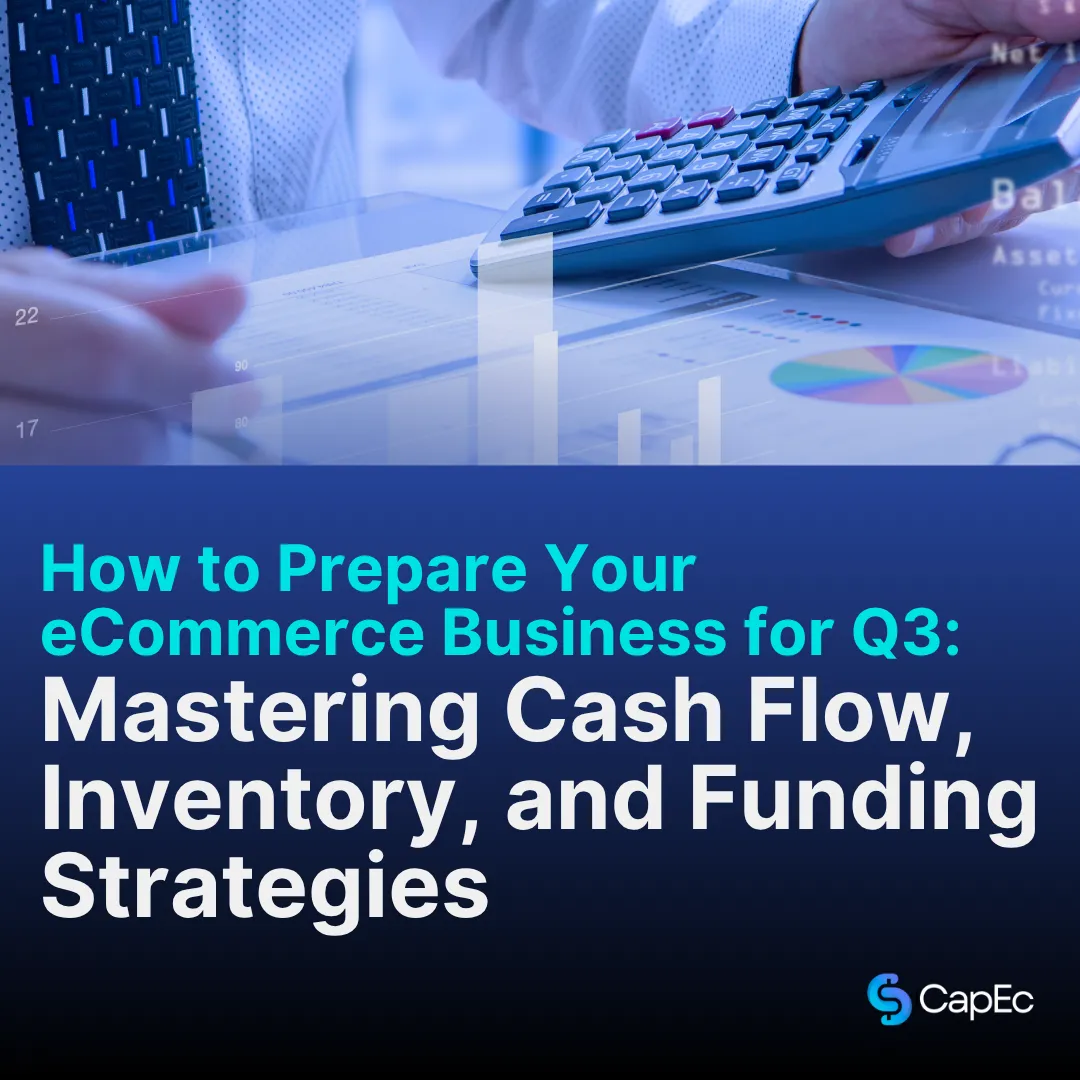
How to Prepare Your eCommerce Business for Q3: Mastering Cash Flow, Inventory, and Funding Strategies
Jun 10 7 min read
As Q2 winds down, eCommerce sellers know what’s coming next: a fast-moving Q3 filled with both opportunity and pressure. From back-to-school sales to Prime Day peaks and early Q4 prep, this is a quarter where decisions on inventory and timing can make or break your momentum.
The catch? These decisions often require capital you don’t have tied up. That’s why this guide focuses on how to prepare smartly—across inventory planning, cash flow management, and flexible funding options designed with today’s seller in mind.
1. Know the Q3 Landscape
Q3 isn’t just the quiet before Q4—it’s packed with high-impact selling windows:
Prime Day (usually July): Major traffic, massive conversion potential
Back-to-School (July–August): Big wins for sellers in electronics, home office, kids’ gear, and more
Summer Clearance (late August): Clear out seasonal SKUs and recover cash early
Early Q4 Buys (September): Smart sellers secure holiday inventory now—not later
Treating Q3 like a staging ground for Q4 will limit your results. Treat it like a standalone growth phase—and you’ll gain the compounding effect going into peak season.
2. The Inventory–Cash Flow Catch
Many sellers forecast Q3 demand accurately… and still fall short. Why?
Because cash is locked up—either in past inventory cycles or performance marketing campaigns.
Traditional financing solutions often create more friction: credit checks, personal guarantees, rigid repayment terms.
The result: smaller purchase orders, understocked shelves, missed demand, and slower growth.
3. A Funding Model Designed for Sellers
CapEc was built specifically to support eCommerce sellers facing this kind of bottleneck. Rather than relying on your credit score or personal guarantees, we look at what actually matters: your sales performance.
Here’s how it works:
Up to 75% funding for your purchase orders, paid directly to your supplier
No credit checks or personal guarantees
Fast decisions (usually under 48 hours)
Repayment flexes with your sales, not a fixed calendar
This approach lets sellers act decisively—without burning working capital or taking on risky debt.

4. Real-World Use Case: Scaling for Back-to-School
Let’s say you sell educational products on Shopify. You’ve got a $60K PO ready for a top supplier—but tying up all that cash would limit your ability to run ads or prep other SKUs.
Using CapEc, you could access $45K to cover that inventory run. That keeps your cash liquid for ads, staffing, or faster turnarounds. You enter August fully stocked and fully resourced—not picking between growth levers.
5. Your Q3 Prep Checklist
✅ Analyze last year’s Q3 performance
✅ Lock in lead times with top suppliers
✅ Identify high-velocity SKUs and reorder points
✅ Explore PO funding options to increase order size
✅ Allocate ad spend strategically to maximize ROI
✅ Begin Q4 planning by early September
Conclusion : Q3 Is Your Launchpad
Q3 is more than a lead-in to the holidays—it’s where smart moves compound into real momentum. The sellers who win are the ones who are ready to move when opportunity shows up—not the ones waiting on capital.
Whether you’re scaling up for Prime Day or placing early Q4 orders, having flexible funding behind you can make the difference between holding back and breaking through.
Want to be ready when opportunity strikes?
Click Here: Explore how CapEc supports growing brands
5 views0 comments
Post not marked as liked
